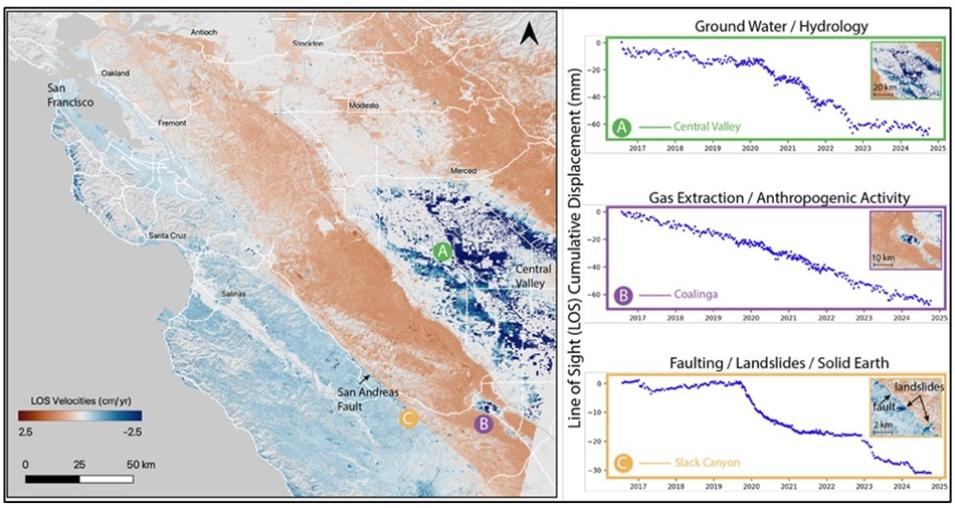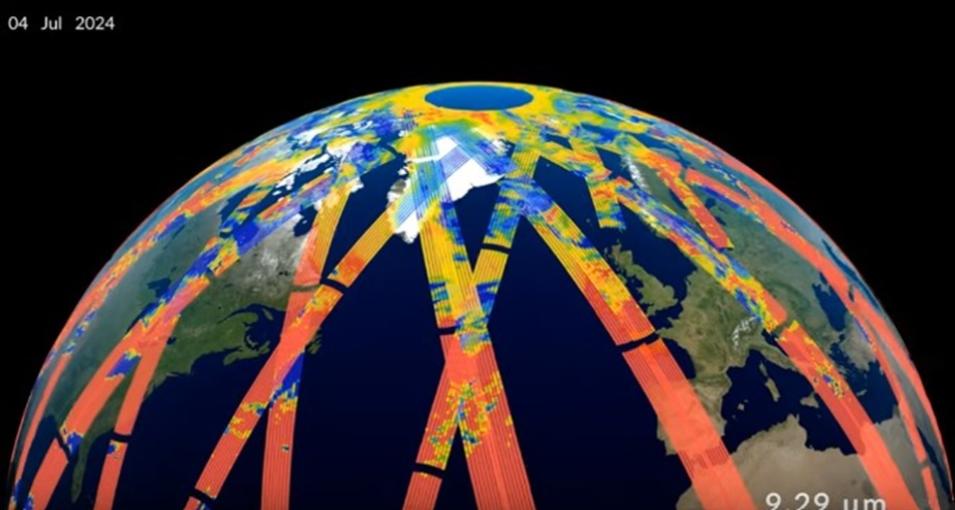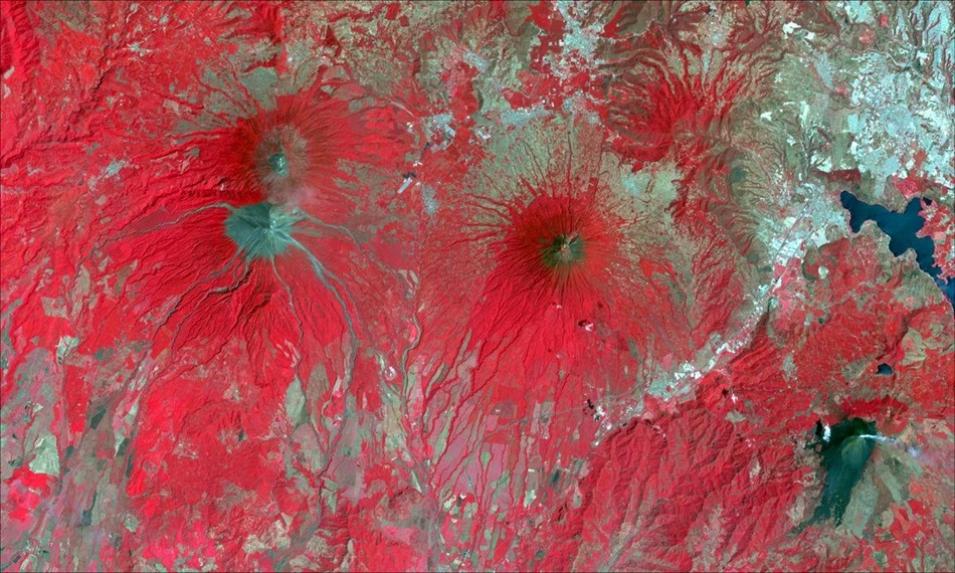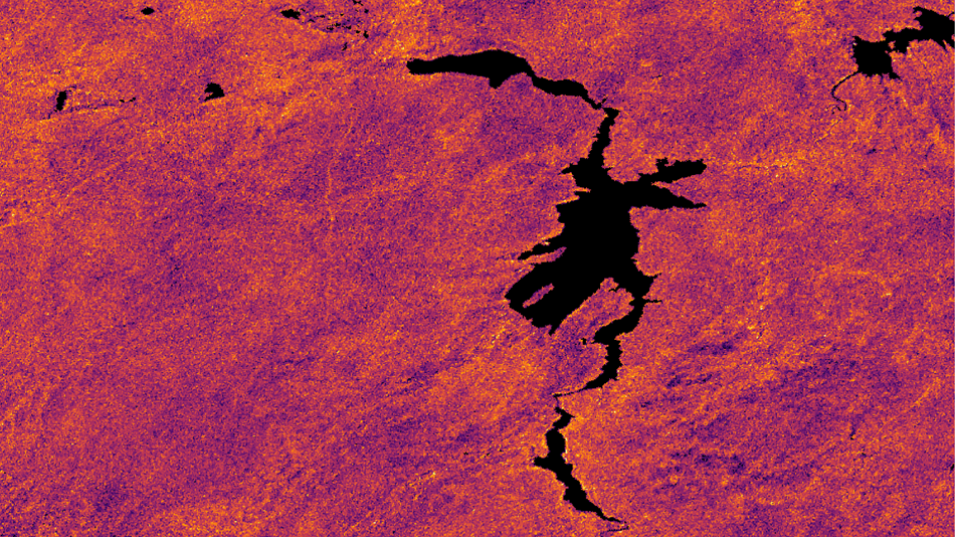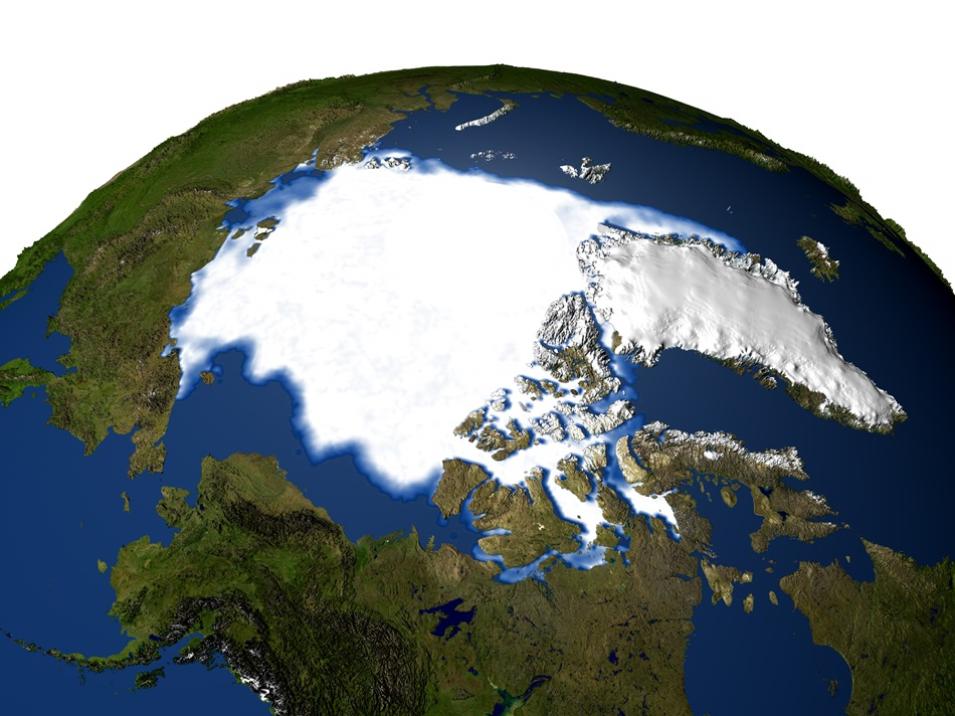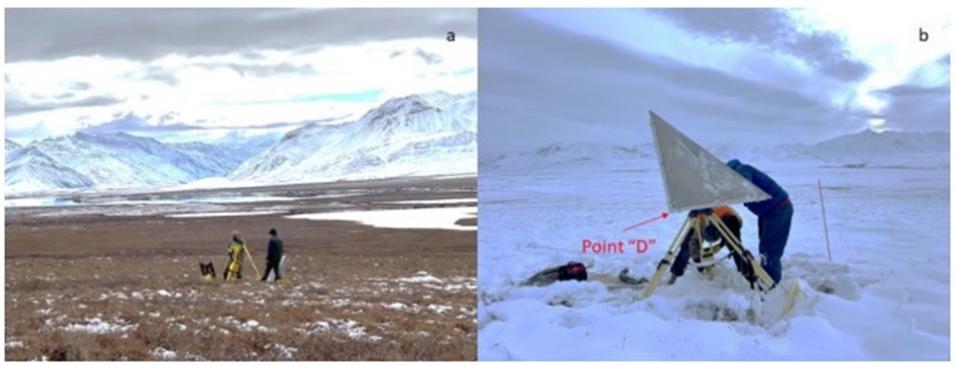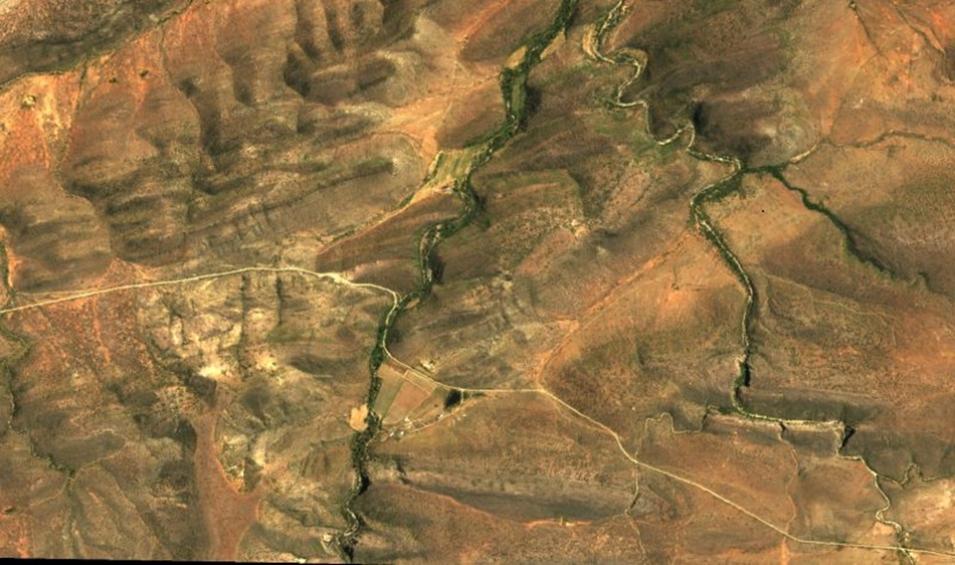OPERA Disturbance Alert Version 0 Provisional Data Decommissioned
LP DAAC announced that, as of April 24, 2025, the Observational Products for End-Users from Remote Sensing Analysis (OPERA) project’s Land Surface Disturbance Alert from Harmonized Landsat Sentinel-2 provisional (OPERA_L3_DIST-ALERT-HLS) Version 0 data product is no longer available through Earthdata Search.
Users are encouraged to transition to the OPERA_L3_DIST-ALERT-HLS Version 1 data product, which was released on March 14, 2024, and has achieved Stage 1 validation. Users currently working with Version 0 data are advised to migrate their workflows to the Version 1 product to ensure continuity and access to the most accurate and up-to-date information.
Learn more about the decommissioning of the OPERA_L3_DIST-ALERT-HLS Version 1 data product.
ECOSTRESS Version 1 Radiance, Cloud Mask, and Land Surface Temperature and Emissivity Data Products Decommissioned
LP DAAC announced that, as of May 30, 2025, the following products from ECOsystem Spaceborne Thermal Radiometer Experiment on Space Station (ECOSTRESS) mission are longer be available through the Earthdata Search.
- ECOSTRESS At-sensor Calibrated Radiance Daily L1B Global 70 m Version 1 (ECO1BRAD)
- ECOSTRESS Cloud Mask Daily L2 Global 70 m Version 1 (ECO2CLD)
- ECOSTRESS Land Surface Temperature and Emissivity Daily L2 Global 70 m Version 1 (ECO2LSTE)
In addition, ECO2CLD and ECO2LSTE will no longer be available through AppEEARS as of that same date.
Users are encouraged to transition to the ECOSTRESS Swath Top of Atmosphere Calibrated Radiance Instantaneous Level 1B Global 70 meter Version 2 (ECO_L1B_RAD), ECOSTRESS Swath Cloud Mask Instantaneous Level 2 Global 70 meter Version 2 (ECO_L2_CLOUD), and ECOSTRESS Swath Land Surface Temperature and Emissivity Instantaneous Level 2 Global 70 meter Version 2 (ECO_L2_LSTE) data products. Gridded and tiled versions are also offered for these products. Users working with ECOSTRESS Version 1 data are encouraged to migrate their workflows to the Version 2 data products as historical processing is being completed.
Learn more about the decommissioning of these ECOSTRESS products.
National Snow and Ice Data Center Distributed Active Archive Center (NSIDC DAAC)
Bootstrap Sea Ice Concentrations from Nimbus-7 SMMR and DMSP SSM/I-SSMIS, Version 4 dataset Updated
NASA’s NSIDC DAAC updated the Bootstrap Sea Ice Concentrations from Nimbus-7 Scanning Multichannel Microwave Radiometer (SMMR) and Defense Meteorological Satellite Program (DMSP) Special Sensor Microwave Imager (SSM/I)-Special Sensor Microwave Imager/Sounder (SSMIS), Version 4 dataset. The dataset, which now includes new data through December 31, 2024, consists of daily and monthly sea ice concentrations derived from brightness temperature measurements. Data are available for the north and south polar regions, with a temporal coverage extending back to November 1, 1978. The data are gridded to the 25 kilometer polar stereographic projection and provided in two-byte integer format.
Access Sea Ice Concentration data and more information.
